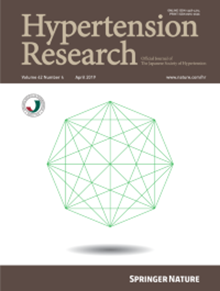日本Kiosk血压测量:临床和人群应用。
IF 4.6
2区 医学
Q1 PERIPHERAL VASCULAR DISEASE
引用次数: 0
摘要
Kiosk血压测量是指在工作场所或公共场所,如体育馆、商场、政府设施等,使用自动装置,在医护人员不在场的情况下自行测量血压。Kiosk血压设备主要由自动滚动式血压计组成,广泛用于健康检查,医院候诊室,药房甚至家庭。kiosk血压测量的显著优势是可以有一个偶然的机会自我测量血压,使其适合于高血压的识别。我们建议将“kiosk blood measurement”一词应用于各种家庭外的血压自我测量,并且由于kiosk是一个自我测量和无人值守的环境,因此kiosk的血压测量尽可能接近于家庭自我测量血压的情况。虽然kiosk血压存在各种挑战,如设备验证、测量环境、条件、长期维护等,但我们应该认识到它的好处,并鼓励人们通过kiosk测量了解自己的血压,从而对自己的高血压进行自我护理。本文章由计算机程序翻译,如有差异,请以英文原文为准。

Kiosk blood pressure measurement in Japan: clinical and population application
Kiosk blood pressure measurement refers to the self-measurement of blood pressure unattended by medical staff using an automated device in workplaces or public spaces, e.g., gymnasiums, shopping malls, or governmental facilities. Kiosk blood pressure devices consist mainly of automated rolling-type sphygmomanometers that are widely used in health check-ups, hospital waiting rooms, pharmacies, and even at home. The distinguished advantage of kiosk blood pressure measurement is that there can be a casual opportunity to self-measure blood pressure, making them suitable for the identification of high blood pressure. We propose to apply the term “kiosk blood pressure measurement” to all kinds of blood pressure self-measurement out-of-home, and to perform kiosk blood pressure measurements as closely as possible, similar to the self-measured home blood pressure condition, since it is a self-measurement and an unattended setting. Although kiosk blood pressure has various challenges, such as device validation, measurement environments, conditions, and long-term maintenance, we should recognize its benefits and encourage people to know their own blood pressure through the kiosk measurement, leading to self-care for their high blood pressure.
求助全文
通过发布文献求助,成功后即可免费获取论文全文。
去求助
来源期刊

Hypertension Research
医学-外周血管病
CiteScore
7.40
自引率
16.70%
发文量
249
审稿时长
3-8 weeks
期刊介绍:
Hypertension Research is the official publication of the Japanese Society of Hypertension. The journal publishes papers reporting original clinical and experimental research that contribute to the advancement of knowledge in the field of hypertension and related cardiovascular diseases. The journal publishes Review Articles, Articles, Correspondence and Comments.
 求助内容:
求助内容: 应助结果提醒方式:
应助结果提醒方式:


